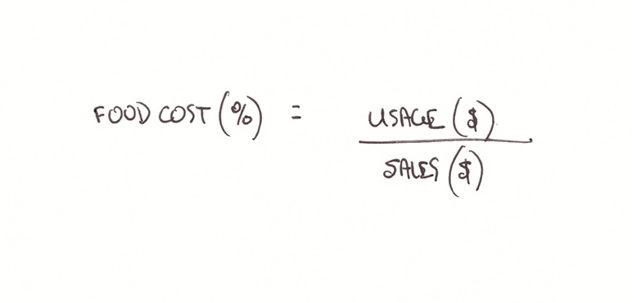In the restaurant industry, because there are such slim margins, everyone is looking to increase profitability.
One of the most effective ways to boost your profits involves simply trimming the waste you see happening around you every day.
Labor is a big expense and should definitely be addressed as part of a comprehensive approach to cutting costs, but today we’re going to talk about five ways to trim food waste in order to lower costs and boost profits.

Establish an inventory system
Over the past couple of years, talking with many small restaurant owners, I’ve been surprised at the number of owners who don’t have a tracking system for food product usage.
It’s the same concept as not using bank statements and just guestimating how much money you have in your account. Let’s face it… you can’t run a business like that.
Just like your bank statements, any inventory system is based on simple math. Convert your inventory counts into dollars (based on purchase price), bring in your sales figures, and you’ll have a formula for food cost that looks like this:

or, simplified:

Build systems for forecasting, ordering and prepping
How do you know how much to prep every day? How do you know how much product to order? How do you know how many guests will be coming through your doors? If you’re just winging it, you’re leaving a lot of money on the table through spoiled product or lack of preparation.
See, the best restaurants have systems in place that can predict with precision how many guests they will have, how much of each product they’ll need to order, and how much of each menu item they’ll need to prep. They do this by tracking and recording as much data as possible; everything from how many guests arrive every hour to how many of each menu item they sell on any given day. Over time, patterns emerge, and reliable predictions can be made.
Remember: always look for data that can be compiled in order to extract information that will help you run a better business.
Create a catalog of recipes and follow them
Tracking food cost doesn’t mean anything unless you act on what you find. You will probably continue seeing volatility in your food cost until you create repeatable food production guidelines (most people call these recipes!) for your menu items. And the systems don’t mean anything unless you follow them. That’s why portion control is so important.
An added bonus of portion control is that it helps maintain the integrity of the dish so that it is presented as designed every time. So write your recipes down and communicate them, invest in measuring cups and scales, and make sure your team understands that they need to follow recipes and use correct portions with every dish.
Follow HACCP management best practices
A big area in which I see a lot of waste is poor food handling. If you’re in the food service industry, you know that HACCP stands for Hazardous Analysis and Critical Control Points. It’s a systematic preventative approach to food safety that focuses on identifying, measuring and reducing hazards in food production.
The key here is to follow the established guidelines for your product and market. Ensure you’re doing basic things like keeping hot foods hot and cold foods cold, and chilling food to a certain temperature within a certain amount of time.
If these practices aren’t followed religiously and recorded regularly, you’ll find yourself either wasting product or risking the health of your guests.
 Learn more about HACCP in the online course at typsy.com.
Learn more about HACCP in the online course at typsy.com.
Encourage your team to utilize waste sheets
This is one of those guidelines that seems like it wouldn’t do much to help (does simply writing it down work?), but you might be surprised at the outcome. Sometimes just the act of tracking waste during prep and service creates awareness for you and your team.
Since awareness is a precursor to taking action, it helps set the stage for conversations with your team to get them engaged. Consider tossing prep waste into a separate bucket from the trash. Think about it like this: you paid per pound for the fish your prep cook is cleaning. You’re only going to get a certain percentage of yield from that raw product. Wouldn’t it be beneficial to know what that yield is?
Alternatively, if your line routinely overcooks five filets every night, wouldn’t it be effective to see that in visual form? Don't put the burnt filets in the trash; instead, put them in a separate container so they can get measured and written down every day.
I’ll be the first to admit that this isn’t the most glamorous part of being a chef or a restaurateur. To be sure, following these five tips for managing your food cost won’t make you Instafamous, but it will certainly help you run a more profitable restaurant.
Learn more about reducing food waste at your hospitality business with our lesson from The Restaurant Boss, Ryan Gromfin.
 |
Jesiah Mauck is the Founder and Managing Director of Greybar Solutions LLC, a restaurant consulting group. As an experienced leader in the hospitality industry and former multi-unit operator, Jesiah helps independent restaurant owners make more money and create more free time by providing strategic management and operations solutions. Follow him on Facebook and LinkedIn. |
You might also like